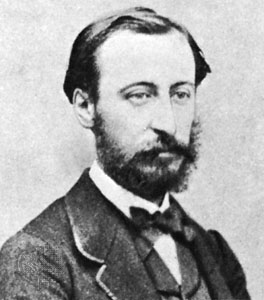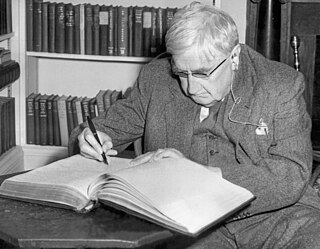Related Research Articles

Malcolm Benjamin Graham Christopher Williamson, was an Australian composer. He was the Master of the Queen's Music from 1975 until his death.
The Sinfonia Concertante for Violin, Viola and Orchestra in E♭ major, K. 364 (320d), was written by Wolfgang Amadeus Mozart.

The Symphony No. 2 in D major, Op. 43, by Jean Sibelius was started in winter 1901 in Rapallo, Italy, shortly after the successful premiere of the popular Finlandia, and finished in 1902 in Finland. Sibelius said, "My second symphony is a confession of the soul."

The Piano Concerto No. 2 in G minor, Op. 22 by Camille Saint-Saëns was composed in 1868 and is probably Saint-Saëns' most popular piano concerto. It was dedicated to Madame A. de Villers. At the première on 13 May the composer was the soloist and Anton Rubinstein conducted the orchestra. Saint-Saëns wrote the concerto in three weeks and had very little time to prepare for the première; consequently, the piece was not initially successful. The capricious changes in style provoked Zygmunt Stojowski to quip that it "begins with Bach and ends with Offenbach."
A London Symphony is the second symphony that Ralph Vaughan Williams composed. The work is sometimes referred to as Symphony No. 2, though the composer did not designate that name for the work. First performed in 1914, the original score of this four-movement symphony was lost and subsequently reconstructed. Vaughan Williams continued revisions of the work into its final definitive form, which was published in 1936.

Ralph Vaughan Williams's Symphony No. 8 in D minor was composed between 1953 and 1955. Sir John Barbirolli, its dedicatee, conducted the Hallé Orchestra in the premiere at the Free Trade Hall in Manchester on 2 May 1956. It is the shortest of the composer's nine symphonies, and is mostly buoyant and optimistic in tone.

The Symphony No. 6, Op. 95 by Malcolm Arnold was written in 1967, and finished in July of that year. It is in three movements:

Symphony No. 1, Op. 13, in E♭ by the Romanian composer George Enescu reflects the composer's training in both Vienna and Paris. In the former location he studied the Brahmsian tradition with Robert Fuchs, and in the latter the French tradition with Jules Massenet and Gabriel Fauré.
John Douglas Louis Veale was an English classical composer.

The Symphony No. 2, Op. 40 by Malcolm Arnold is a symphony dating from 1953. Arnold composed the symphony on commission from the Bournemouth Winter Garden's Society. He dedicated the score to the Bournemouth Symphony Orchestra and conductor Charles Groves, who premiered the work on 25 May 1953.
The Symphony No. 5, Op. 74 by Malcolm Arnold was finished in 1961. It is in four movements:
The Symphony No. 9, Op. 128 by Malcolm Arnold was finished in 1986. It is in four movements:
Santiago de Espada is a concert overture by the Australian composer Malcolm Williamson.
The Symphony No. 1 Elevamini is an orchestral work by Australian-born composer Malcolm Williamson.
Australian composer Malcolm Williamson wrote his Symphony No. 7 in 1984 to a joint commission from the Chamber Youth Strings of Melbourne and the State of Victoria, Australia. It was written mostly at the composer's home in Sandon, Hertfordshire, England.
The Symphony No. 5, H. 310, is an orchestral composition by the Czech composer Bohuslav Martinů.

Symphony No. 2, Op. 17, in A major by the Romanian composer George Enescu was written in 1912–14. A performance lasts about 55 minutes.

The Symphony No. 3, Op. 21, in C major is a large-scale orchestral-vocal composition by the Romanian composer George Enescu. While it was first written in 1916–18. the composer revised it numerous times over the following decades.
Frederick Delius's Cello Concerto was composed in 1920–1921. The world premiere was given in January 1923 in Vienna by Alexandre Barjansky. The work was written at the request of the English cellist Beatrice Harrison, who was the soloist at the British premiere in July 1923.
Improvisations on an Impromptu of Benjamin Britten is an orchestral piece by William Walton. It was first performed by the San Francisco Symphony Orchestra, conducted by Josef Krips, on 14 January 1970. Its European premiere was at Benjamin Britten's Aldeburgh Festival in June of that year. The work has subsequently been recorded for commercial release.
References
- Notes
- ↑ Foreman 2007 , p. 10
- ↑ Harris & Meredith , p. 411
- ↑ Foreman 2007 , p. 11
- Sources
- Foreman, Lewis (2007). Williamson: Orchestral Works Vol. 2 (PDF) (CD). Chandos Records. CHAN 10406. Archived from the original (PDF) on 23 September 2015. Retrieved 10 December 2017.
- Harris & Meredith. [ full citation needed ].